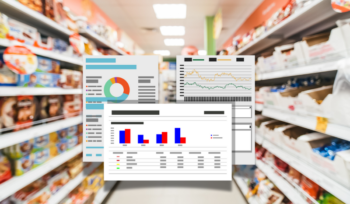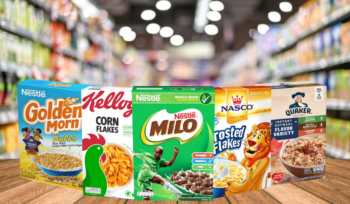- 23/04/2013
- Posted by: Julien Garcier
- Categories: Consumer Goods / FMCG, Ghana, Retail, Sagaci Insights, Supermarkets
No Comments
Below is the list of all tables and figures included in the report. Please note that most sections can be purchased individually directly below. If you want a specific page, please contact us directly by calling +33 1 84 17 07 35 or send us an e-mail at sales@sagaciresearch.com
Part 1 – Economy & Demography: Strong fundamentals
- Page 7
- Ghana – Constant GDP growth (Figure 1)
- Ghana value-added by economic activity (Figure 2)
- Page 8: Ghana Constant GDP growth (Figure 3)
- Page 9
- Ghana population (in million inhabitants) (Figure 4)
- Ghana population of key cities (in million inhabitants) (Figure 5)
- Page 11: Sagaci Research Country Attractiveness Matrix 2013 (Figure 6)
Part 2 – Consumer perspective: Growing middle-class, attached to traditional way-of-life
- Page 14
- 2013: Split of households by average monthly income (2011 USD) (Figure 7)
- 2018: Split of households by average monthly income (2011 USD) (Figure 8)
- Page 15: Equipment of households in key household goods (Figure 9)
- Page 16: Household goods adoption curves by equipment (Figure 10)
- Page 17: Ghana – Household expenditures by type in 2010 (Figure 11)
- Page 18: Share of food in consumption expenditures by households in 2010 (Figure 12)
- Page 19
- % of individuals who have Ghanaian food for lunch (Figure 13)
- % of individuals that look for Ghanaian food even when abroad (Figure 14)
- Page 20
- Most visited channel for Fruits & Vegetables purchases (Figure 15)
- Most visited channel for Grocery products purchases (Figure 16)
- Page 21
- Share of modern retail as % of total grocery expenditures 2008-2012 (Figure 17)
- Share of modern retail grocery spending by income bracket 2008-2012 (Figure 18)
- Page 22
- Consumption expenditure per household (real GHS) 2012-2018 (Figure 19)
- Average monthly grocery spending per household (real GHS) 2012-2018 (Figure 20)
Part 3 – Retail structure: Dense traditional retail scene, handful of modern retailers
- Page 25: Off-trade distribution channels (Figure 21)
- Page 26: On-trade distribution channels (Figure 22)
- Page 27: Estimated number of off-trade and on-trade retail outlets across Ghana (Figure 23)
- Page 28: Estimated number of off-trade and on-trade retail outlets across the Accra Metropolitan Area (Figure 24)
- Page 29: Number of off-trade and on-trade retail outlets in Dansoman (Accra Metropolitan Area) (Figure 25)
- Page 30: Number of off-trade and on-trade retail outlets in Osu (Accra Metropolitan Area) (Figure 26)
- Page 31: Number of off-trade and on-trade retail outlets in Adabraka (Accra Metropolitan Area) (Figure 27)
- Page 32: FMCG supply-chain (Ghana, 2013) (Figure 28)
- Page 33: Major FMCG, soft drinks and alcoholic drinks distributors in Ghana (Figure 29)
- Page 34: Share of male vs. female ownership of stores (Figure 30)
- Page 35: Operating model for traditional stores (Figure 31)
- Page 36: Map of major traditional markets across Ghana (Figure 32)
- Page 39: List of modern retailers and key characteristics (Figure 33)
- Page 40: Evolution of number of modern stores 2008-2012 (Figure 34)
- Page 41: Map of modern retailers and major traditional markets in Accra (Figure 35)
- Page 42: Split of modern retailers store surface by category (Figure 36)
Part 4 – Growth hindered: Conditions for strong growth not yet met
- Page 45: Penetration of cars across Ghana (Figure 37)
- Page 46: Grocery price index for modern retailers (Figure 38)
- Page 47: Grocery price index for modern and traditional retailers (Figure 39)
- Page 48: Business model / high-level P&L for traditional stores (Figure 40)
- Page 49
- Wholesale & retail margins: Illustration for Milo Chocolate (Figure 41)
- Wholesale & retail margins: Illustration for Rexona Soap (Figure 42)
- Page 50
- Wholesale & retail margins: Illustration for bottled water (traditional trade) (Figure 43)
- Wholesale & retail margins: Illustration for sachet water (traditional trade) (Figure 44)
- Page 51: Estimated share of local products within total assortment (Figure 45)
- Page 52: Selected key local brands by category (Figure 46)
- Page 53: Country of origin for main biscuits brands available by retail chain (Figure 47)
- Page 54: Major retail real estate projects on-going in Ghana (Figure 48)
Part 5 – Moving forward: Modern retail to reach 8% by 2018
- Page 57
- Forecasted grocery sales 2012-2018 (B GHS, current) (Figure 49)
- Forecasted modern retail grocery sales (B GHS, current) (Figure 50)
- Forecasted share of modern retail 2012-2018 (Figure 51)
- Page 58
- Forecasted number of modern retail stores in Ghana in 2018 (Figure 52)
- Forecasted modern retail surface (‘000 sqm) in Ghana in 2018 (Figure 53)
- Page 59:
-
Development plans of modern retailers (Figure 54)
- Page 60: Attractiveness of Ghanaian cities for retail activities (Figure 55)
- Page 61: Map of priority cities for modern retail development (Figure 56)
- Page 62: Sagaci Research retail forecast market model 2008-2018 (Figure 57)





